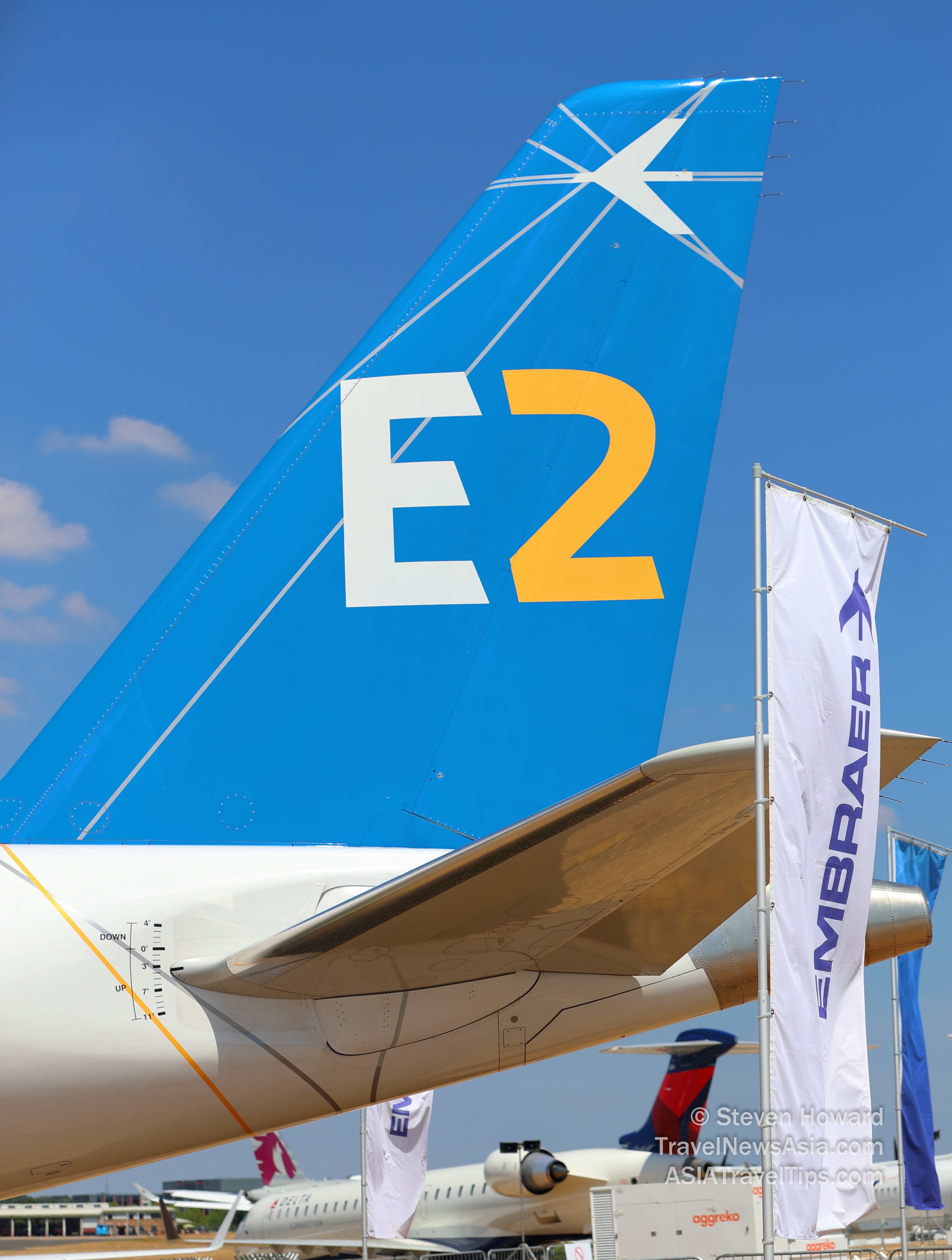|
Embraer has received Type Certification for the
E195-E2 from three regulatory authorities: ANAC, the Brazilian
Civil Aviation Agency (Agência Nacional de Aviação Civil); the FAA
(U.S. Federal Aviation Administration) and EASA (European Aviation Safety Agency).
The E195-E2 is the biggest of the three members of
the E-Jets E2 family of commercial airplanes and the largest
commercial aircraft Embraer has ever made.

Just like the
E190-E2, we once again obtained type certification simultaneously
from three major world regulatory authorities, said Paulo Cesar
de Souza e Silva, Embraer President & CEO. This is another great
achievement from our engineering and program teams. Theyve built,
and now have certification for, the most efficient single-aisle
jet on the market. And theyve done it again right on schedule and
exceeding specification.
The E195-E2 will enter
service in the second half of 2019 with Azul Linhas Aéreas
Brasileiras S.A. Binter Canarias, of Spain, will also receive its
first E195-E2 in 2019.
Embraer used two prototype aircraft in the
E195-E2 certification campaign, one for aerodynamic and
performance tests, the other for the interior and validation of
maintenance tasks.
The E195-E2 features new
ultra-high bypass ratio engines, a completely new wing, full
fly-by-wire and new landing gear. Compared to the first-generation
E195, 75% of aircraft systems are new. The E195-E2 has 3
additional seat rows. The cabin can be configured with 120 seats
in two classes, or up to 146 in a single class.
Our flight tests confirmed that
the aircraft is better than its original specification. Fuel
consumption is 1.4% lower than expected - thats 25.4% less fuel
per seat compared to the current-generation E195. Maintenance
costs are 20% lower, said John Slattery, President & CEO, Embraer
Commercial Aviation. Theres no question that airlines are going
to love this airplanes economics. The E195-E2 is the ideal
aircraft for growing regional business and complementing existing
low-cost and mainline fleets.
E195-E2 Performance Improvements
E195-E2 performance targets were to be similar
to the E195 but with more payload (12 more passengers). The final
results, however, show significant improvements in many areas:
Range:
Maximum range is 2,600 nautical miles with a full passenger load,
600 nm more than the E195.
Restricted Airports: The
E195-E2 can serve more markets from limited airfields. From
Denver, the aircrafts range is more than 900 nm longer than the
E195. From Santos Dumont, the gain is more than 500 nm.
Take Off Field Length: At MTOW, the E195-E2 requires only 1,800 m
(2,180 m for the E195.)
|
Headlines: |
|
See latest
HD Video
Interviews,
Podcasts
and other
news regarding:
TAG.
|
